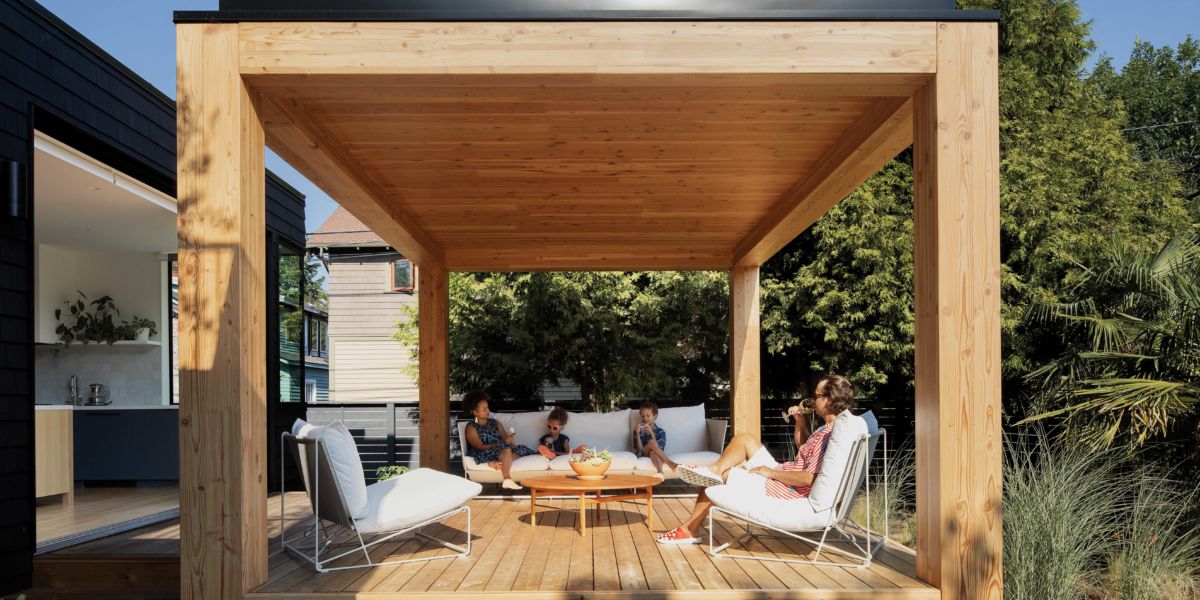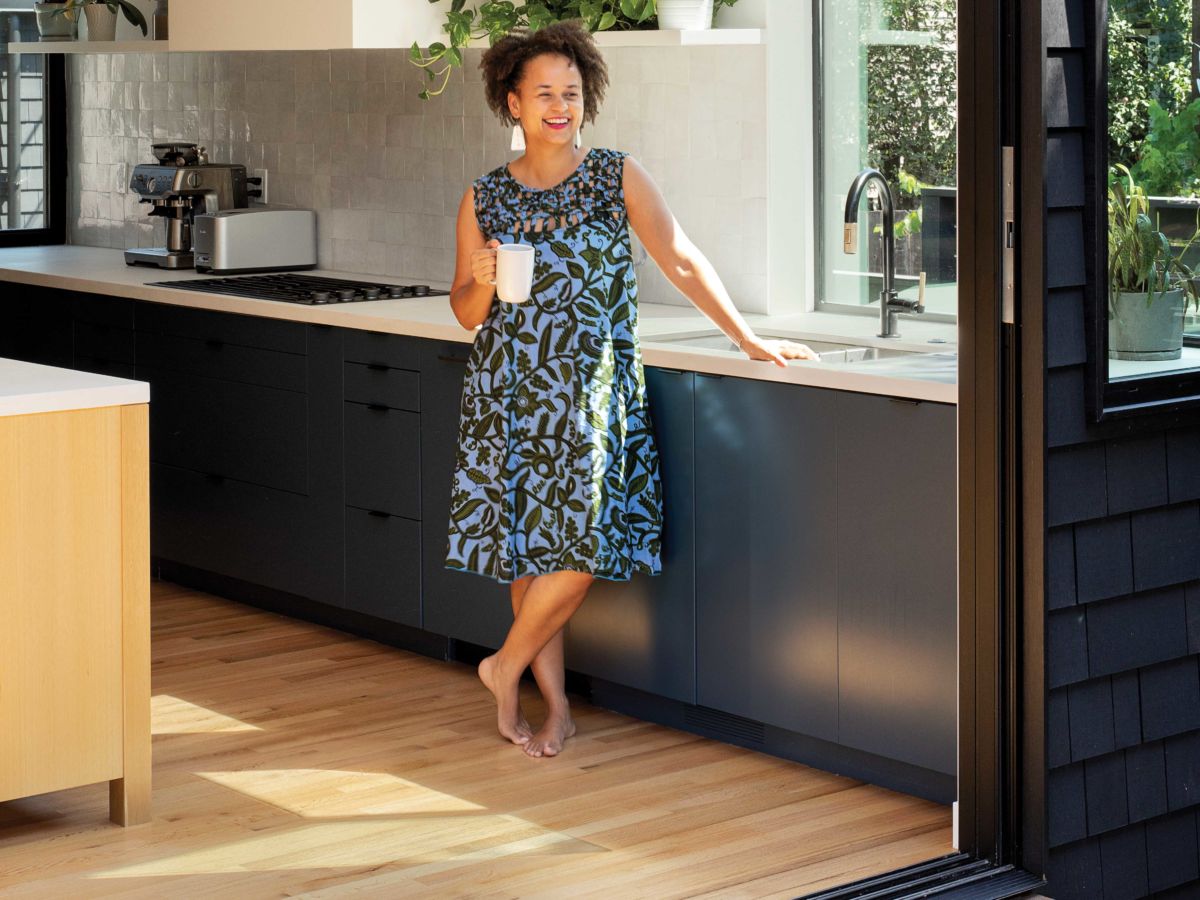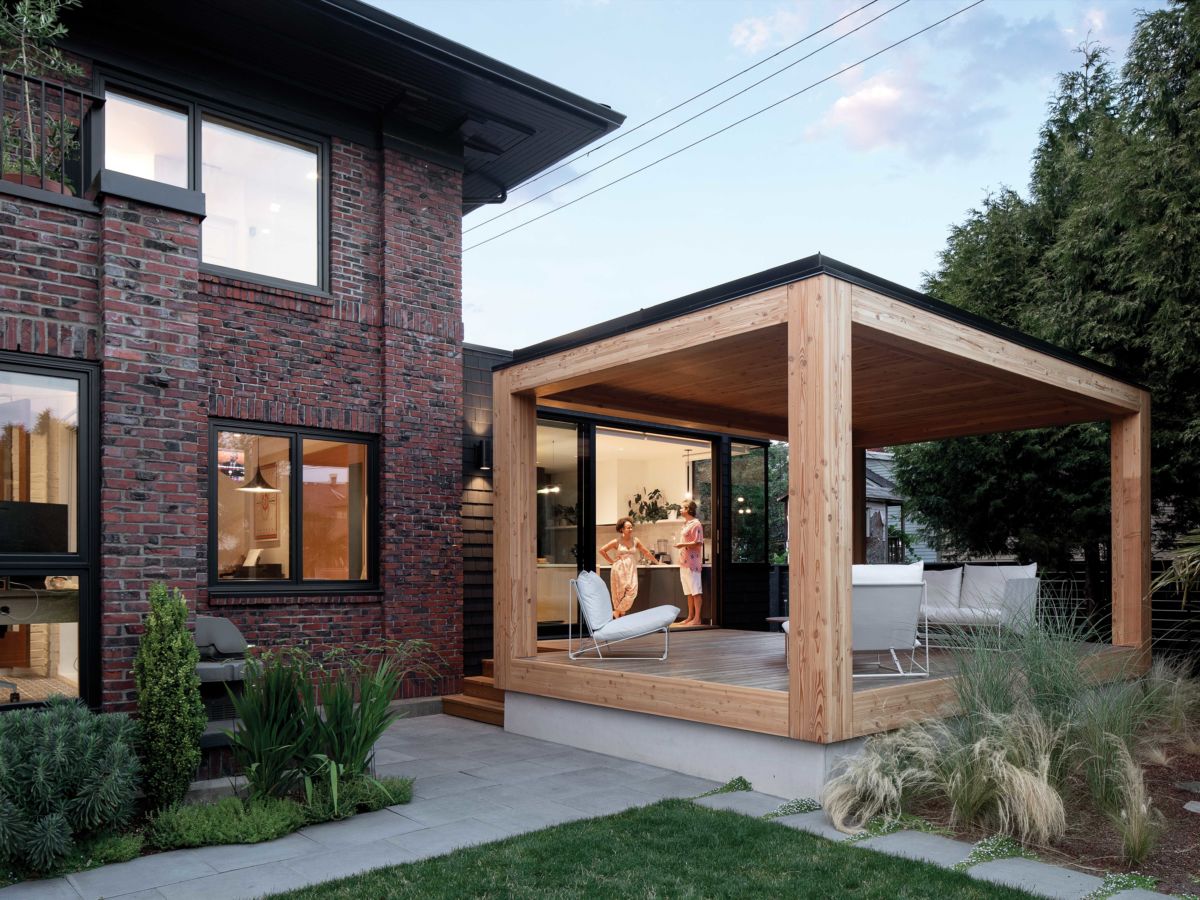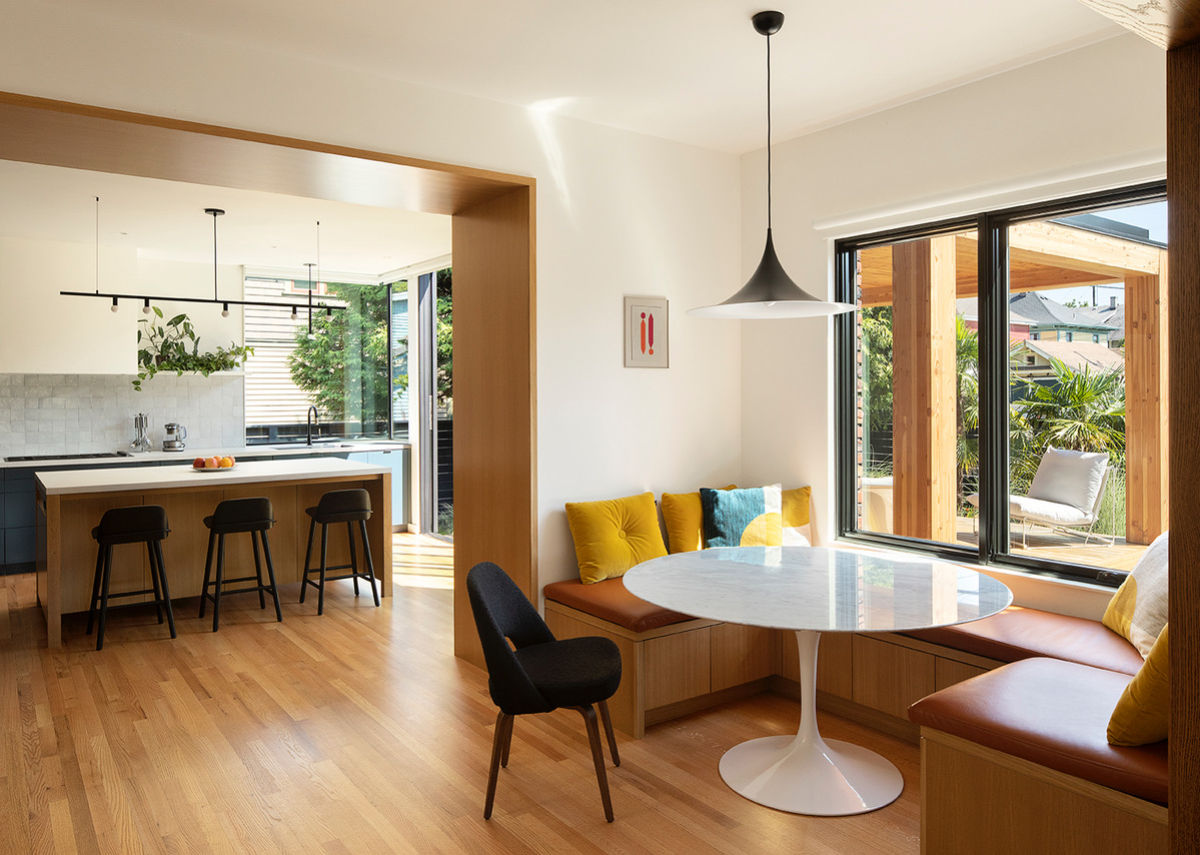
Introducing CLT, the New (but Familiar) Building Material That’s Disrupting the Construction Industry
With community development and sustainability in mind, a Portland real-estate developer uses her own home renovation as an opportunity to experiment with a new building technique. The results seamlessly blend old and new.

We only recommend things we love. If you buy something through our site, we might earn a commission.
When real-estate developer Anyeley Hallová approached Thomas Robinson of Lever Architecture about updating her family’s Prairie-style house in Northeast Portland, the frequent collaborators were already communicating in a kind of shorthand. For years, Robinson and the Lever team had been working with Hallová on a number of projects with a sharp focus on sustainability, and on providing economic opportunities for minority communities in the Portland area. So it was no surprise they were quickly on the same page with a plan to preserve a grand old clinker brick home, in a culturally significant Black neighborhood, without turning it into a fusty restoration.

Jeremy Bittermann
“The house was built in the 1920s, and owned by the African-American family of one of the first longshoremen in the area,” say Hallová, who is Ghanaian-American and has double master’s degrees in city planning and landscape architecture from MIT and Harvard. “They owned it for 60 years, and his sons sold it to us. We preserved the historic elements in the front of the house, but the project was a full gut. It becomes more modern toward the back of the house. I believe that you need to design for your time. Don’t try to mimic history.”

Jeremy Bittermann
“It’s like an Elvis impersonator,” adds Robinson. “It’s fun, but it’s not the real thing. The biggest challenge, and the most interesting thing about updating older buildings, is the dialogue between old and new.” In addition to creating a stylish and functional family house, they seized the opportunity to demonstrate the potential of cross-laminated timber, or CLT, a construction material that’s new to the U.S. and that they’ve been instrumental in promoting.
Five years ago, Hallová partnered with Lever to enter The U.S. Tall Wood Building Prize Competition organized by the United States Department of Agriculture. The goal was to introduce the building method, which has been popular in Europe for decades, to a wary American audience, and prove that multi-story buildings—even skyscrapers—can be made of wood, be fire-safe, and “rock and level” in the event of an earthquake. They worked together with a Portland-based affordable-housing initiative to design a 60-unit high-rise building, Framework. Short story: They won the contest, the U.S. building codes have been adjusted, and Framework is the first mixed-use, residential wood high-rise that’s been approved for construction. Now innovative CLT structures are popping up across the country, on college campuses, and museum grounds.


